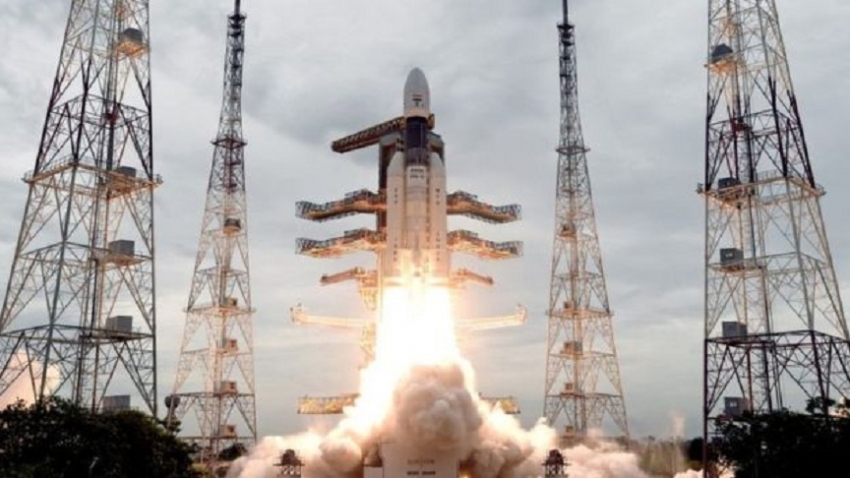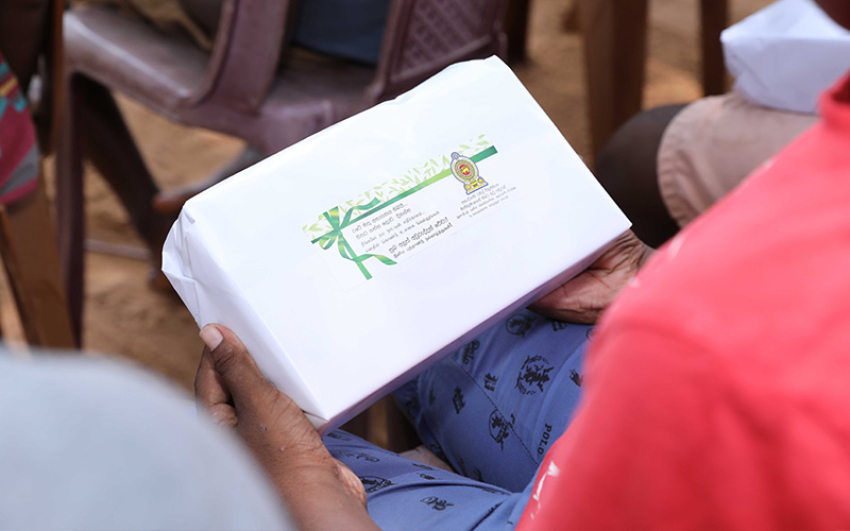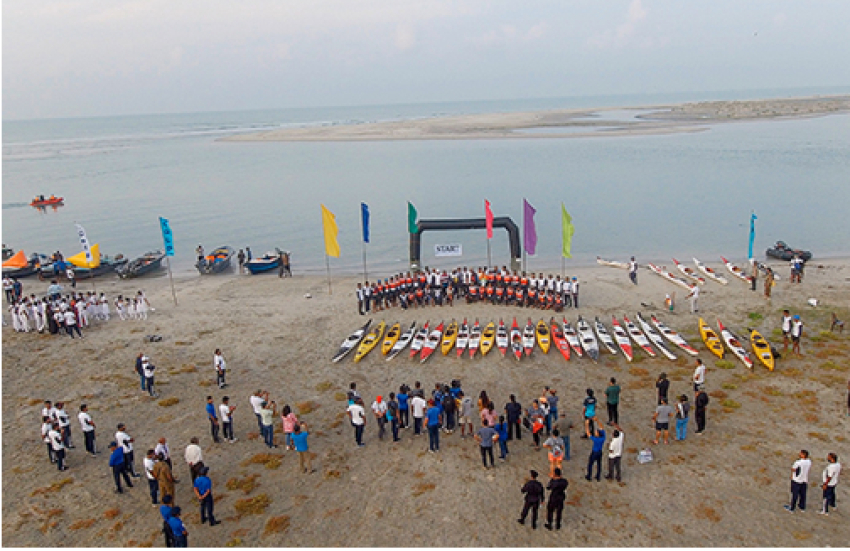Indian Prime Minister Narendra Modi told his country's space scientists he was proud of a programme that had come so near to putting a probe on the Moon.Contact with Chandrayaan-2 was lost moments before its Vikram module was due to touch down at the lunar south pole.The fate of the craft is not yet known, but Mr Modi said there would be further opportunities.India would have been the fourth nation to make a soft landing on the Moon. The best is yet to come in our space programme. India is with you," said Mr Modi.The Chandrayaan-2 approached the Moon as normal until an error occurred about 2.1km (1.3 miles) from the surface, officials said.The mission's lift-off was broadcast live to an audience of hundreds of millions India's Space Research Organization (Isro) said it lost contact seconds before the ship was expected to land.The country's first Moon mission - Chandrayaan-1, in 2008 - carried out the first and most detailed search for water on the lunar surface using radars.
What happened? Chandrayaan-2 entered the Moon's orbit on 20 August and was due to make a controlled descent to the surface early on Saturday, Indian time, over a month after it first took off.Staff at mission control were glued to the screens at Isro's Bangalore space centre as the spacecraft made its descent towards the surface.The control room burst into applause during the so-called rough breaking phase of the descent, with Prime Minister Modi watching the action from behind a glass screen.Isro chairman Kailasavadivoo Sivan announced to staff that the ship's initial descent had been "normal," and that the mission's data would be analysed.Mr Sivan had earlier described the final descent as "15 minutes of terror".
What was this mission all about?Chandrayaan-2 (Moon vehicle 2) was the most complex mission ever attempted by India's space agency, Isro. "It is the beginning of a historical journey," Isro chief K Sivan said after launch in July.The lander (named Vikram, after the founder of Isro) carried within its belly a 27kg Moon rover with instruments to analyse the lunar soil.
India's grand ambitions in second Moon mission The rover (called Pragyan - wisdom in Sanskrit) had the capacity to travel 500m from the lander in its 14-day life span, and would have sent data and images back to Earth for analysis.The mission would have focused on the lunar surface, searching for water and minerals and measuring moonquakes, among other things.Why would it have been significant?A soft landing on another planetary body - a feat achieved by just three other countries so far - would have been a huge technological achievement for Isro and India's space ambitions, writes science writer Pallava Bagla.He adds that it would also have paved the way for future Indian missions to land on Mars, and opened up the possibility of India sending astronauts into space.For the first time in India's space history, the interplanetary expedition was led by two women - project director Muthaya Vanitha and mission director Ritu Karidhal.
India a space superpower?It is also a matter of national pride - the satellite's lift-off in July was broadcast live on TV and Isro's official social media accounts.The mission has also made global headlines because it's so cheap - the budget for Avengers: Endgame, for instance, was more than double at an estimated $356m. But this isn't the first time Isro has been hailed for its thrift. Its 2014 Mars mission cost $74m, a tenth of the budget for the American Maven orbiter.
Why India's Mars mission is so cheap - and thrilling
Mars Orbiter Mission (MOM) is one of the cheapest interplanetary missions ever undertakenIndia's space programme has succeeded at the first attempt where others have failed - by sending an operational mission to Mars.The Mangalyaan satellite was confirmed to be in orbit shortly after 0800, Indian time. It is, without doubt, a considerable achievement.This is a mission that has been budgeted at 4.5bn rupees ($74m), which, by Western standards, is staggeringly cheap.The American Maven orbiter that arrived at the Red Planet on Monday is costing almost 10 times as much.Back in June, Indian Prime Minister Narendra Modi even quipped that India's real-life Martian adventure was costing less than the make-believe Hollywood film Gravity.
So how has India done it? For sure, people costs are less in this populous nation, and the scientists and engineers working on any space mission are always the largest part of the ticket price.Home-grown components and technologies have also been prioritised over expensive foreign imports.But, in addition, India has been careful to do things simply.Narendra Modi said the country had achieved the "near impossible""They've kept it small. The payload weighs only about 15kg. Compare that with the complexity in the payload in Maven and that will explain a lot about the cost," says Britain's Prof Andrew Coates, who will be a principal investigator on Europe's Mars rover in 2018."Of course, that reduced complexity suggests it won't be as scientifically capable, but India has been smart in targeting some really important areas that will complement what others are doing."Mangalyaan has gone equipped with an instrument that will try to measure methane in the atmosphere.This is one of the hottest topics in Mars research right now, following previous, tantalising observations of the gas.Earth's atmosphere contains billions of tonnes of methane, the vast majority of it coming from microbes, such as the organisms found in the digestive tracts of animals.The speculation has been that some methane-producing bugs, or methanogens, could perhaps exist on Mars if they lived underground, away from the planet's harsh surface conditions.
Mangalyaan will measure methane in the Martian atmosphere - a crucial question
It is a fascinating prospect.So, even though Mangalyaan has a small payload, it will actually address some of the biggest questions at the Red Planet.Western scientists are excited also to have the Indian probe on station.Its measurements of other atmospheric components will dovetail very nicely with Maven and the observations being made by Europe's Mars Express. "It means we'll be getting three-point measurements, which is tremendous," says Prof Coates.This will enable researchers to better understand how the planet lost the bulk of its atmosphere billions of years ago, and determine what sort of climate it could once have had, and whether or not it was conducive to life.I have read a lot about the criticism of Mangalyaan and India's space programme.There's an assumption among many, I guess, that space activity is somehow a plaything best left to wealthy industrial countries; that it can have no value to developing nations.
The money would be better spent on healthcare and improved sanitation, so the argument goes.But what this position often overlooks is that investment in science and technology builds capability and capacity, and develops the sort of people who benefit the economy and society more widely.Space activity is also a wealth generator. Some of the stuff we do up there pays for stuff down here.The industrialised nations know it; that's one of the reasons they invest so heavily in space activity.Consider just the UK. It has dramatically increased its spending on space in recent years.The government has even identified satellites as being one of the "eight great technologies" that can help rebalance the UK economy and drive it forward.India wants a part of this action, too, and in Mangalyaan and its other satellite and rocket programmes, the nation is putting itself into a strong position in internationalmarkets for space products and services.
Why is India sending humanoid robots into space?
The GSLV Mark III rocket is going to be used for the flightBefore humans headed up there, animals were the first living creatures that were sent into space. But India will now become the first nation to fly a spacecraft with only humanoid robots. Science writer Pallava Bagla reports.The Indian government has sanctioned $1.4bn (£1.1bn) to the Indian Space Research Organisation (Isro) for its first manned space flight by 2022.They hope to use the country's heaviest rocket - the Geosynchronous Satellite Launch Vehicle Mark III or GSLV Mk-III - for the space flight.Working in tandem with the Indian Air Force, the space agency will train a crew of 10 astronauts and eventually select three of them for the flight.To date - using indigenously made rockets - Russia, the US and China have sent astronauts into space. If India can achieve this, it will become the fourth country to launch humans into space from its own soil.
Atlas, a humanoid robot developed by Boston Dynamics, is now able to perform backflipsBut, unlike other nations that have carried out human space flights, India will not fly animals into space. Instead, it will fly humanoid robots for a better understanding of what weightlessness and radiation do to the human body during long durations in space."It is a highly ambitious and challenging national programme. But before Indians are flown into space, two flights with humanoids will test the limits of the crew module," Isro chairman and well-known rocket scientist, K Sivan said.In the early years of space flight, there were concerns whether humans would survive in weightless conditions or if the radiation would prove to be hazardous. Many experiments were conducted to establish whether flying life into space was safe.So fruit flies, mice, monkeys, dogs, cats, chimpanzees, tortoise and spiders were launched into space before the first human, Yuri Gagarin, was orbited around the Earth in 1961.
The USSR sent a dog, Laika, into spaceNo human spaceflight has launched from America since the retirement of the Space Shuttle in 2011, and Nasa has relied on Russian Soyuz modules to ferry astronauts to and from the ISS in the intervening years.In 2014, Nasa awarded Elon Musk's SpaceX and Boeing a combined $6.8bn to build competing spacecraft to carry astronauts into orbit from the United States.Currently, the Americans are developing two new crew modules - one by Elon Musk's SpaceX called Dragon and another by Boeing called Starliner - which are scheduled for the first human space flight trials.In March, SpaceX used its Falcon-9 rocket to launch the Crew Dragon into space. It carries on board a highly instrumented mannequin named Ripley - a dummy astronaut of sorts to check the spacecraft's performance. But there are no humans on this experimental mission."Neither SpaceX or Boeing will fly animals in advance of people," says Dr Michael R Barratt, a specialist in aerospace medicine and a Nasa astronaut.
Pallava Bagla is a Delhi-based science writer
Four reasons India is going big on space
India's "monster rocket" carried a huge satellite into space The Indian Space Research Organisation (Isro) dubbed the launch of their heaviest rocket yet - weighing 640 tonnes and carrying a 3,000kg satellite - a "historic day".The rocket - equivalent in weight to five fully laden jumbo jets, or 200 fully grown elephants - was put into space using locally-developed technology; the launch had been planned for a decade.India is often criticised for spending money on space projects when nearly a quarter of its population live below its official poverty limit.So why is India so keen on space? BBC Tamil's Sivaramakrishnan Parameswaran investigates. It's cheap India argues that the cost of the latest launch was not huge by international standards. It cost about $5m (£3.87m).Isro called the launch a "historic day"With an expected life span of 10 years, the operating cost per year is narrowed down further - to a level that India's space industry claims is "very cheap".India has been constantly upping its budget allocation for scientific research, and in particular space research. In fact, this has partly been in response to criticism that it does not spend anything like as much on science funding as it should.
Booming industryThe United States, France and Russia hold nearly 75% of the nearly $6bn (£4.6bn) satellite launch industry - one that is increasingly lucrative.India now hopes to tap "hugely" into this.Only a few countries have the potential to launch huge satellitesThe "space economics" include launching satellites ranging from a few kilos to ones weighing hundreds of kilos.In a multibillion dollar industry, India has just a share of just above 0.5% - while China has 3% of the market, according to the Satellite Industry Association.In the past India was unable to lure customers for their satellite launches due to its launch vehicle constraints, making the nation heavily dependent on France for its launches.That is now a thing of the past.Changing the marketMost meteorological and communication satellites weigh nearly four tonnes and that needs a massive rocket to launch them.With the latest launch, India has sent a strong message to the international community that a low-cost alternative is available.The rocket launched by India is said to be the weight of 200 fully grown elephantsIndia launches 'monster' rocketIt recently successfully launched 104 satellites of varying sizes in one go, enhancing its credibility.The global satellite market - which includes building, launching and sustaining communications between them - is worth $120bn (£92.7bn), and has mushroomed in recent years, driven by the increased demand for connectivity.Analysts say with its lower costs, India could become a hub for the growing satellite launch industry.Critics question the rationale of India investing hugely in scientific development when comprehensive social development is still lacking.Millions in India still don't have access to clean drinking water, uninterrupted power supply, toilet facilities, road and rail connectivity among others.But successive governments have argued that spending on science and technology leads to all-round social development.The latest rocket launch is a case in point. India hopes it will encourage developing nations to use them for their launches rather than the Western nations.And regardless of criticism, India is putting up the money - the budget has been increased and there are now plans to launch a mission to Venus.




















